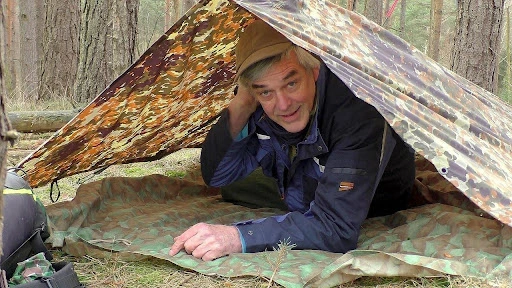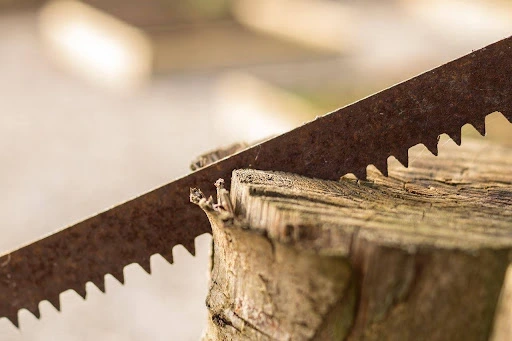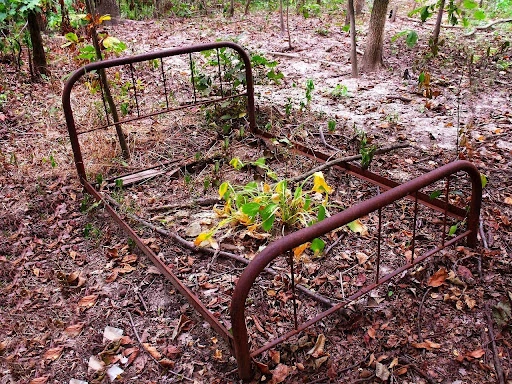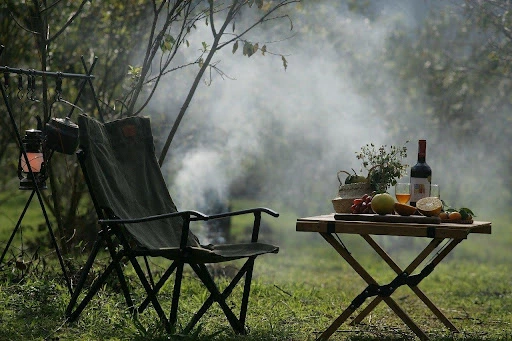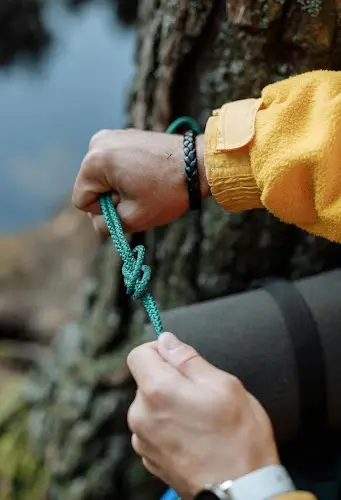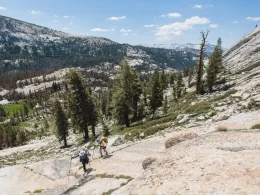You’ll find two general categories of camping customers, in my opinion: those that shell out thousands of dollars for a top-of-the-line experience, willing to pay any amount to have the “best” gear, and those who are extremely frugal and will try to pay as little as possible for the baseline experience. Those that know how to use natural resources to craft items (I’ll call them survivalists) generally fall into that latter category as well.
During times like these, when prices are starting to creep up on camping gear in all areas, it helps to know a few ways to shop smart for camping gear that is both reasonably priced and able to do the job that you want.
In this article, I’ll talk about 4 ways that you can actively use to help save money on camping gear while being smart about your choices. My hope is that this article can help recreate the “spectrum” of camping gear customers that balance both savings and quality.
Table of Contents
#1 Find Gear That Does More Than One Thing
Finding gear that does more than one thing is actually a common ideology within the survivalist and off-grid communities already. It’s a mentality that I use often when I am out in the woods camping, simply because it makes sense. You can easily apply it to your camping gear strategy.
For example, a camping tarp is an excellent piece of kit that can be used for multiple things. It can be turned into a shelter for sleep, a rain cover for gear, an emergency poncho/blanket if you are stranded, and countless other things.
Another good example can be found in something as simple as a multi-tool. These gadgets will have handy things such as pliers, a saw, and a knife. Sure, it’s not the best at any one of these things, but in a pinch, they can really come in handy. The knife on my pocket tool is actually sharper than some of the knives I have purchased.
#2 The Most Expensive Gear is Not Necessarily the Best
I think people are picking up on this tip in many consumer industries. Just because a brand name is slapped onto something and has a price tag with many numbers does not mean it is a smart purchase.
You can find this easily in stores like Wal-Mart, which will sell their branded food products alongside a notable brand, with the product being identical (or close to) the known brand. However, the notable brand always has a large price bump.
This methodology transfers over to the camping gear industry to a degree. I have a Coghlan’s folding saw that I bought for less than $5 at a military surplus store 3 years ago. To this day, it is as sharp as the Silky BigBoy saw that I purchased for $160; it’s just not as long, which is why I have both. I use both saws hard, and they have both held up just fine with my usage.
Where you have to be careful is knowing what makes a good product. I have had inexpensive products that are indeed cheaply made. If you do this enough times, then it just drives you to buy the most expensive gear. It may require a bit of research, but the deals are out there.
#3 If You Can’t Find What You Want, Rethink Your Strategy
If you’re stubborn like me, then you will be quite hell-bent on getting the piece of gear you set your mind on. I can say after several years of dealing with this problem, it’s not worth it. Sometimes it is easier to change your strategy than to get what you want initially.
This year was a good example of that for me. I travel in remote areas that don’t have much more than outfitters and general hardware-type stores that have camping gear. Amazon is a pain to get out there, and while Everest.com does deliver, they don’t have shuttles going to the middle of the woods.
I have been looking for a hammock for the last two months. I left mine in storage and wanted a new hammock experience. The pickings are slim up here in Northern Ontario, Canada, so instead of just buying a $450 setup, I changed my mindset.
Instead, I am going to use my tent and I purchased a well-built, low-profile cot that will fit in the tent. This will get me off the ground (so my sleeping pad doesn’t get wet if the ground gets wet from rain and the tent leaks) and cost me substantially less than the hammock would have.
When I come across a hammock that fits my needs, I will rethink my strategy again, but in the end, I am happy and comfortable. Trust me, from one outdoor enthusiast to another, don’t be stubborn all the time.
#4 Shop in the Off-Season
Funny story, it is currently the beginning of July and I needed a new ball cap. I went to a local store that had brands I liked. I walked in and to my surprise, everything (yes, everything) for summer was on sale. I talked to the fellow at the counter and he said that the summer season was “over” and that they would have fall and winter stuff in the next month (at full retail price, of course).
We are now transitioning (here at least, in retail) into the off-season where everything is significantly discounted. You can go to the store towards the tail end of your preferred season and stock up on the gear you want at a discounted price. This is the time to shop for the items you want to round out your camping kit.
Why Most People Look for Expensive Gear
Now, there IS a caveat to these things. Yes, expensive gear is generally well-made and of better quality components than inexpensive gear. I have many pieces of kit that I had to save up for but have lasted me for at least a decade.
A good example is my titanium cook cup that I have had for almost 8 years now. Aside from some creosote buildup on the outside (which I can scrub clean), there is not a single dent or mark on it, even the measurements on the inside have not faded at all.
This is because titanium is corrosion-resistant and very durable. I cannot find something similar that is made of steel or aluminum without it either being hazardous to my health if the metal gets damaged or can’t handle the heat of a fire.
Expensive camping gear does have its place; you just need to research what makes a product worth buying to help justify the cost of it.
Final Thoughts
It’s a good idea, in my opinion, to exercise caution when purchasing anything these days. With oversaturated markets, there is a high chance you’ll get a dud if you’re not diligent in your research. But fret not, marketplaces like Everest.com that work closely with their vendors have a higher chance of providing both expensive and inexpensive gear that performs when it needs to.


